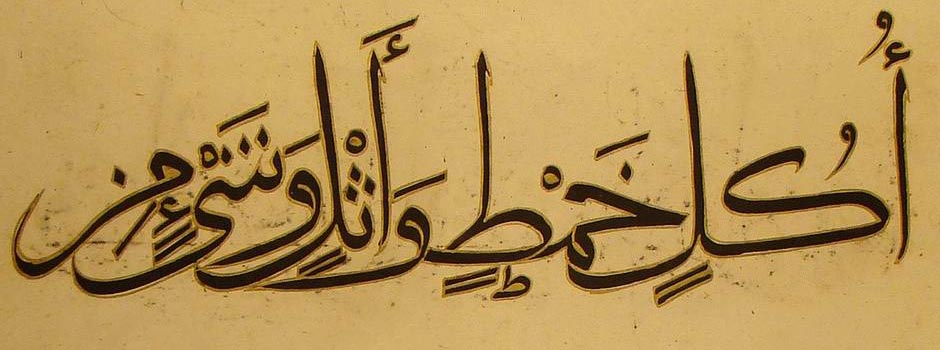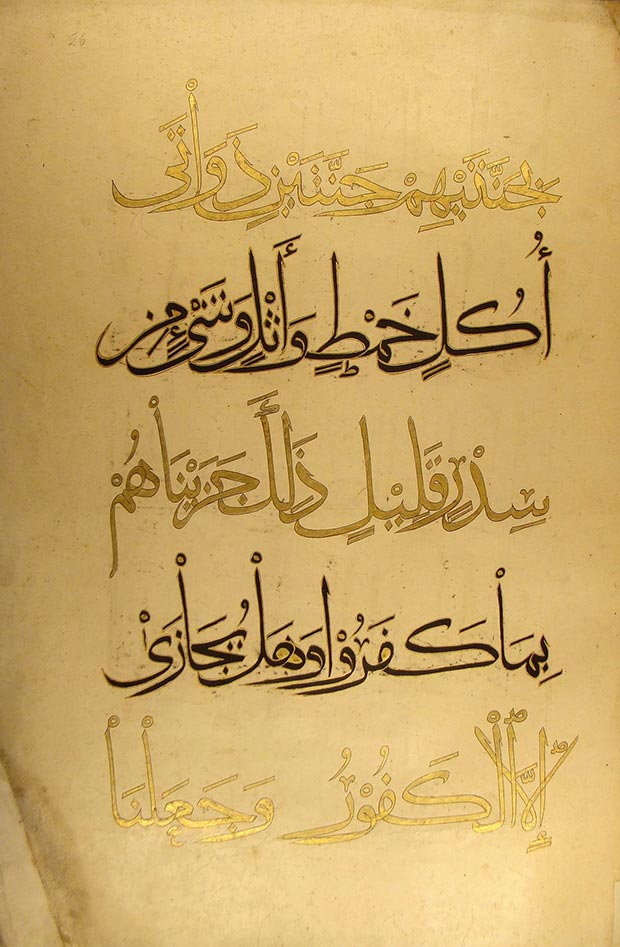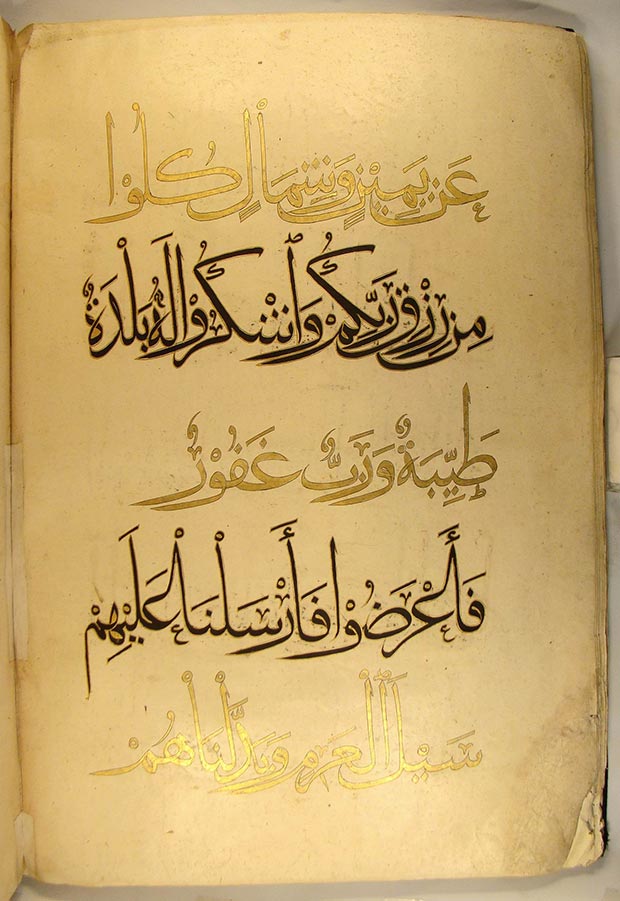
MANUSCRIPTS Five of the Most Famous Qur’an Manuscripts from Bosnian Collections
May 14, 2019 FEATURE, Manuscripts

This article is a part of the project 'Promotion of the Ottoman Cultural Heritage of Bosnia and Turkey' which is organized by Monolit, Association for Promoting Islamic Arts and supported by the Republic of Turkey (YTB - T.C. BAŞBAKANLIK Yurtdışı Türkler ve Akraba Topluluklar Başkanlığı / Prime Ministry, Presidency for Turks Abroad and Related Communities).
This is the most valuable transcript of Qur'an in Bosnian collections. It used to have 30 separately uprooted parts (juz), but, only 22 were preserved until today. It was commissioned by the famous Bosniak vizier Mehmed Pasha Sokolović (d. 1579) who endowed this transcript to a mosque in his native town of Sokolovići in Eastern Bosnia. The manuscript is distinguished by the extraordinary calligraphy and illumination that is characteristic for the mature period of the Ottoman decorative art. Now it is part of the manuscript collection of the Gazi Husrev Beg Library in Sarajevo.
 Quran of Mehmed Pasha Sokolović / Courtesy of the Gazi Husrev Beg Library
Quran of Mehmed Pasha Sokolović / Courtesy of the Gazi Husrev Beg Library
 Quran of Mehmed Pasha Sokolović / Courtesy of the Gazi Husrev Beg Library
Quran of Mehmed Pasha Sokolović / Courtesy of the Gazi Husrev Beg Library
By its format, 59 x 40 cm, this is the largest preserved Qur'an (parts of the Qur'an) in Bosnia. From 30 juz, only two were preserved, juz 22 and juz 27. Considering that it is coming from the Ilkhanid period, from the beginning of the 14th century, this is also the oldest transcript in Bosnian collections. It is characteristic by the large thuluth letters (older variant) and interesting colorist approach considering the fact that the lines were written alternately in black and golden color. For quite some time these two juz were kept in the Ferhadija Mosque in Banja Luka (Northwestern Bosnia), after which they were given the name. Today this Qur'an is part of the manuscript collection of the Gazi Husrev Beg Library in Sarajevo.
 Qur'an of the Ferhadija Mosque in Banja Luka / Courtesy of the Gazi Husrev Beg Library
Qur'an of the Ferhadija Mosque in Banja Luka / Courtesy of the Gazi Husrev Beg Library
 Qur'an of the Ferhadija Mosque in Banja Luka / Courtesy of the Gazi Husrev Beg Library
Qur'an of the Ferhadija Mosque in Banja Luka / Courtesy of the Gazi Husrev Beg Library
_IslamicArtsMagazine_01.jpg) Mamluk Qur'an / Photo © Islamic Arts Magazine
Mamluk Qur'an / Photo © Islamic Arts Magazine
_IslamicArtsMagazine_02.jpg) Mamluk Qur'an / Photo © Islamic Arts Magazine
Mamluk Qur'an / Photo © Islamic Arts Magazine
For this manuscript we can determine that it is one of most beautiful Safavid Qur'ans from 16th century. It was transcribed by Abdullah b. Muhammad al-Hafiz aš-Širazi in h.980 / 1572-73. It is distinguished by its large format, extremely rich illumination, especially of the initial Surahs, as well as a very beautiful and elegant calligraphy. This Qur'an represents extremely well the Safavid school of calligraphy and illumination. It is part of the manuscript collection of the Gazi Husrev Beg Library in Sarajevo.
_IslamicArtsMagazine.jpg) Safavid Qur'an / Courtesy of the Gazi Husrev Beg Library
Safavid Qur'an / Courtesy of the Gazi Husrev Beg Library
Generally, this Quran represents one of the most beautiful transcripts in 19th century. It was endowed in the Gazi Husrev Beg Library in 1872 by the famous intellectual and politician Fadil Pasha Šerifović. The transcriber of the famous copy from 1849 is the calligrapher Dagestani, one of the best in his time. The illumination of the first pages is especially impressive, and is often taken as a proof that this type of art was still very developed in the late Ottoman period.
 Qur'an of Fadil Pasha Šerifović / Courtesy of the Gazi Husrev Beg Library
Qur'an of Fadil Pasha Šerifović / Courtesy of the Gazi Husrev Beg Library
Comments
Add a comment